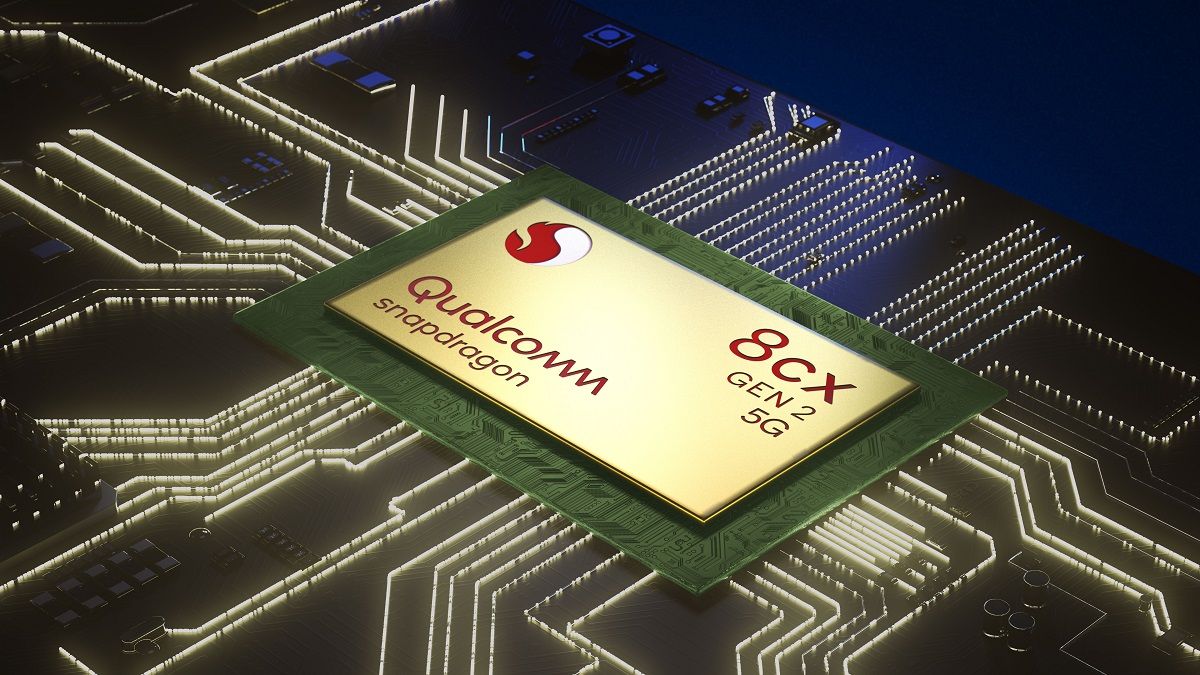In 2018, Qualcomm announced the Snapdragon 8cx compute platform, the company's highest-end chipset aimed not at smartphones or tablets but rather laptops. The Snapdragon 8cx was actually Qualcomm's third attempt at designing a chip for consumer PCs, following the Snapdragon 835 and Snapdragon 850. In conjunction with Microsoft, Qualcomm has been working to create a new class of ultraportable laptops called the "Always On, Always Connected" PC; these "ACPCs", powered by either the 835, 850, or 8cx compute platforms, are extremely thin and light, generally fanless, support cellular connectivity, and feature all-day battery life—hence "Always On, Always Connected." Today, Qualcomm unveiled the second-generation of its Snapdragon 8cx compute platform for next-gen ACPCs.
The new chip is called the "Qualcomm Snapdragon 8cx Gen 2 5G compute platform," which is certainly a mouthful. Qualcomm is labeling this product as "Gen 2" since it's a minor update over the original platform and doesn't feature any changes to the architecture. That means it still features an octa-core CPU in a 4+4 cluster configuration, with 4 ARM Cortex-A76 cores joined by 4 ARM Cortex-A55 cores. The GPU is Qualcomm's Adreno 680 "Extreme", which is still the company's most powerful GPU to date. Other components and features include the Qualcomm 685 DSP and Qualcomm's 4th generation AI Engine for 9 TOPS performance; the Qualcomm Spectra 390 ISP with support for 4K HDR playback or video capture at 30fps, a single 32MP camera with Zero Shutter Lag (ZSL), or dual 16MP cameras with ZSL; up to 4K on-device display resolution; dual 4K60 external monitor support; Qualcomm Aqstic echo-cancellation and noise suppression support; Hi-Fi audio with virtual surround sound support; full hypervisor and Windows 10 Enterprise support, and more.
What's actually new in the second-generation Snapdragon 8cx? Well, the platform now supports Qualcomm's FastConnect 6800 mobile connectivity subsystem, which brings in support for Wi-Fi 6 (IEEE 802.11ax) and Bluetooth 5.1. Of course, the platform also still supports cellular connectivity with its integrated Snapdragon X24 modem which supports 4G LTE, but it can also optionally support 5G NR (both sub-6GHz or mmWave) if it's paired with the discrete Snapdragon X55 modem-RF system.
Other than that, there's not much else that seems to be new. The chip is still fabricated on a 7nm FinFET process. Qualcomm says that the Snapdragon 8cx Gen 2 in a fanless 7W TDP design offers total system performance and productivity performance per watt that's 18% and 39% greater respectively than a comparable 10th-gen Intel Core i5 15W TDP design.
The Snapdragon 8cx Gen 2 5G compute platform is sampling now to customers and is expected to appear in commercial devices in late 2020. We've already seen laptops with the first-gen chip from Microsoft, Samsung, and Lenovo, but soon Acer will launch its first-ever Windows on Snapdragon PC powered by the new chip. So far, we haven't seen any PC makers apart from Microsoft make use of Qualcomm's AI Engine (Microsoft uses it to accelerate the Eye Contact feature in the Surface Pro X), but if the Snapdragon 8cx becomes more popular, then that could change.

